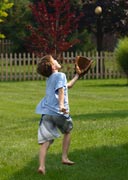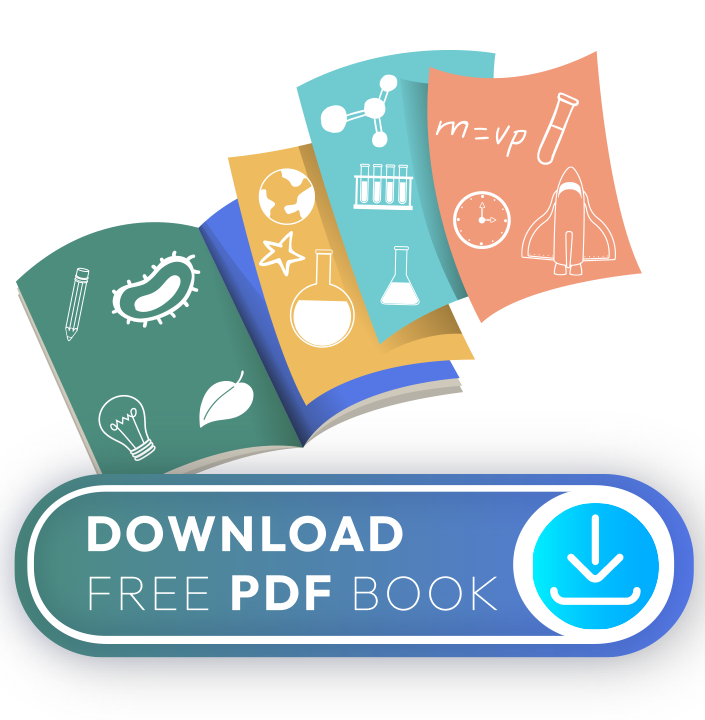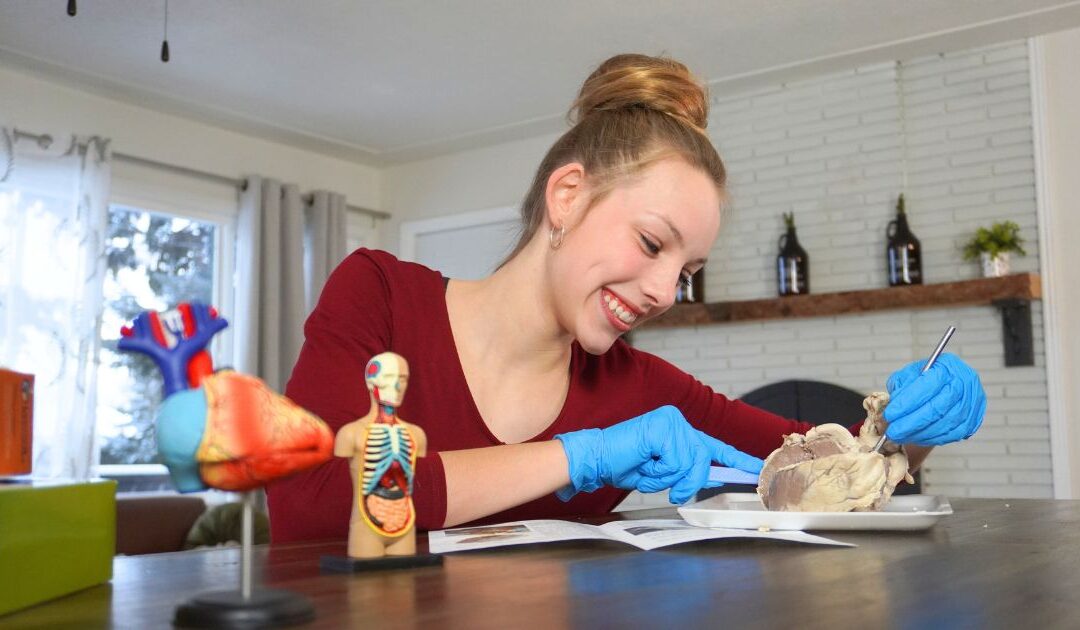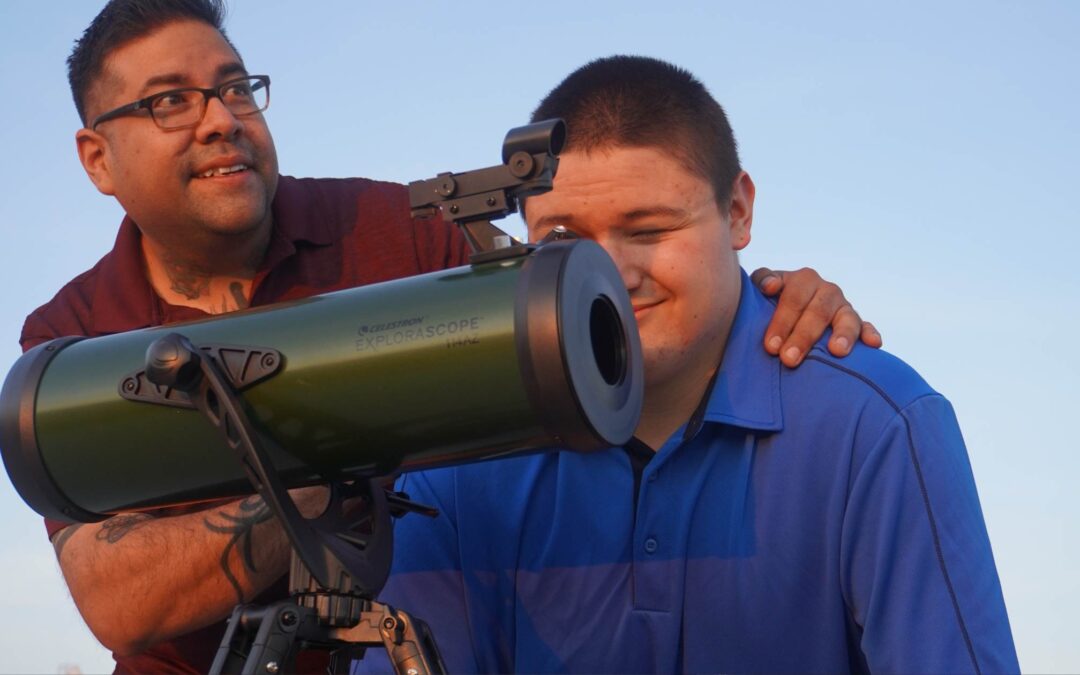#1: Make a Hand Model
Make a working model of your hand, using paper and string. You’ll see how the muscles in your hands pull on your bones to help you move your fingers!

What You Need:
- Cardstock or thin cardboard
- Pen
- Scissors (and an adult to help you use them)
- Thin string
- Tape
What You Do:
1. With your fingers spread out, trace around your hand to make a hand outline on the cardstock. Cut out the hand shape with scissors (have an adult help you).
2. Cut five pieces of string that are all about the length of your cardboard hand.
3. Tear off a very small piece of tape and attach one string to the top of the thumb of your cardboard hand.
4. Put another small piece of tape at the main finger joint, in the middle of the thumb. Make sure that the string is secured to the cardboard. Put a third piece of tape at the bottom of the thumb, where the finger is connected to the palm of the hand.
5. Do the same thing for the other four fingers – using three small pieces of tape to attach the string to the cardboard. Make sure there is enough space between the tape to be able to grab hold of the string later on.
6. Put a big piece of tape over the ends of the five strings, so they are stuck to the palm of the cardboard hand.
7. Pull on the strings to see them move at the taped joints. What happens if you tug on a string close to the fingertip? How about if you pull the strings near the palm of the hand (above the large piece of tape)?
What Happened:
On your hand, you have three joints in each finger. Joints are formed by bones and tendons (tough, thick cords) and are covered by muscles. On the model hand, each of the joints is made with the piece of tape that connects the string to the cardboard. The string is like the muscles and tendons in your hand, because it can pull on the cardboard (which is like your bones), and make it bend. Unlike your hand though, this model is not very flexible. Joints in your hands can bend much more easily because there are separate bones between each joint. Pull on different parts of the different strings and see how the cardboard hand moves. Try moving your fingers in the same way. Can you move your fingers more than the cardboard hand can?
#2: Muscles in Motion
Use your sense of touch to find out which muscles you use when doing different activities. For this project you may want a friend or family member to be your helper.
What You Do:
1. Hold one arm out in front of you, with your palm facing up. Make a fist, and slowly bring your arm up at the elbow, then bend it back down. Which arm muscles do you think you are using?
2. Do the first step again, bringing your arm slowly back and forth, but this time put your other hand on your arm just above the elbow. Can you feel your muscles moving?
3. What muscles would you use to catch a baseball? How about throwing a baseball? With your helper, come up with different sports (Basketball, Tennis, Soccer, etc.). What muscles do you think athletes in these sports use the most? Have your helper act out what an athlete does for a particular sport. For example, for soccer, you might jump, kick, and run. What leg muscles does this use? How about arm muscles?
4. Try making a slow kicking motion (while sitting in a chair, so you don’t fall down), while your partner feels your leg muscles to see which ones are being used. You could do the same thing with different activities: catching a baseball, catching a football, throwing a frisbee, swinging a golf club, skiing, etc. Act out as many different activities as you can think of, to see what muscles they would use. Take turns with your helper acting out different sports in slow motion.
 What Happened:
What Happened:
You use various muscles in your body throughout the day. Muscles are what allow you to move. Even very basic things that you do often require you to use your muscles – getting out of bed, eating, walking, and playing all use muscles! When you experimented, you probably found that certain parts of your arms and legs helped you do certain things, like throw or catch a ball, kick a ball, run, etc. Can you think of some other things you do that use those same muscles? How about jumping, skipping, doing cartwheels or summersaults, playing tag or leap-frog, helping set the table or wash the dishes, brushing your teeth, and putting away your toys?
To learn more about some of the different muscles in your body, check out this worksheet. See if you can name the muscles you used for the different activities you tried above.
Muscles Science Lesson
All About Muscles
Muscles are made of a special kind of body tissue that is very flexible. They are located between your bones and your skin. Some muscles are inside of your organs, like your heart and stomach. Muscles are able to contract, or pull, to help your body move. Muscles grow with you as you grow. Once you are fully grown, they can also grow stronger from exercise, such as lifting weights. Check out this website to see magnified pictures of muscle tissue.
Muscles turn energy into motion – they are like the engines or motors of your body. They are what allow you to move. Even though you have an amazing skeleton system (your bones), without muscles, you wouldn’t be able to move your bones an inch! There are a total of about 630 muscles in your body and each one serves a special purpose. Lots of muscles work together to help you move or even just stay balanced. When you are standing still, your body needs 300 different muscles just to keep you from falling over! That’s nearly half of the muscles in your whole body. Eating, running, jumping, kicking, catching, playing talking, and lots of other activities that we do every day require muscles.
Kinds of Muscles
There are three types of muscle in the human body: skeletal, cardiac, and smooth. All of the muscles in your body together are called the muscular system.
Skeletal muscles attach to bones, and are voluntary—you can control them with your brain, which sends signals through nerves telling the muscles to move. Most of the muscles in your body are skeletal muscles – they are the ones that allow you move your arms and legs, make funny faces, and wiggle your toes. Many skeletal muscles are connected to your bones through tendons. Being connected to bones is what makes it easy for your body to move when your muscles are working. Skeletal muscles usually come in pairs. When one muscles works, or contracts, it moves a part of your body in one direction. To move it back, the opposite muscle has to contract! For example, if you stretch your arm out in front of you and bend it at the elbow, your bicep muscle contracts. To straighten your arm back out, your triceps muscle contracts and the bicep relaxes back to normal!
Did you know that your heart is made mostly of muscle? The type of muscle in your heart is called cardiac (say: kar-dee-ak) muscle, and the heart is the only place in your body where it is found. This muscle is very durable and strong, but it is also a little bit flexible. This allows the heart to pump blood all through your body. The cardiac muscles move in and out, pumping blood through your veins, and allowing blood to move back into your heart, so it can keep circulating. Your heart beats about 100,000 times every day! In one day, the blood in your body travels a total of 12,000 miles – that’s like traveling across the US from coast to coast four times! The muscles in your heart move in and out, so that your heart pumps without you even having to think about it. Muscles that move this way are called involuntary.
Smooth muscles cause movement inside your body in places you don’t often notice. They help you digest food by pushing it down your esophagus and into your stomach and then on into your intestines. Your eyes also have smooth muscles that help you focus on things. Even your blood vessels have smooth muscles to help move blood through your body. These muscles can stretch a lot. They can also maintain the stretch for a long time without tearing. They are usually in layers. Smooth muscles are involuntary, too—they work automatically, whether you ever think about them or not!
Printable Worksheet and PDF
Teach kids about major muscles like biceps and quadriceps, where they are located, and actions they are used for with the labeled diagram on this worksheet. The bottom part provides space to draw pictures of activities that use the muscles shown. It also works well in conjunction with the Muscles in Motion science project above.






